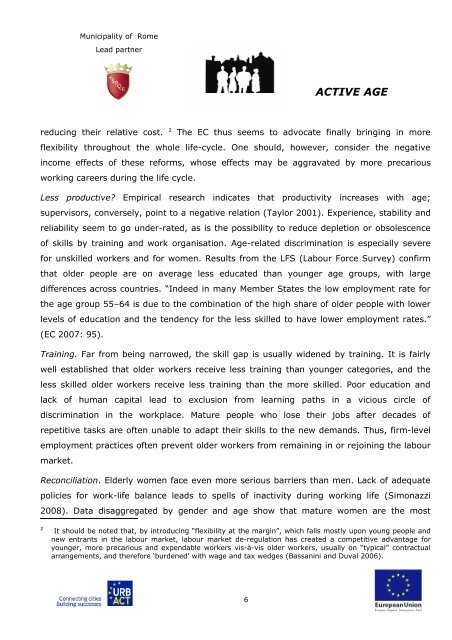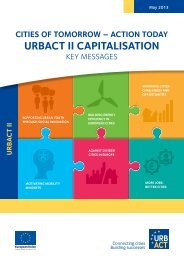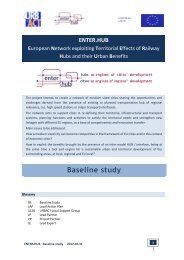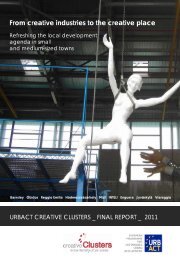ACTIVE AGE - Urbact
ACTIVE AGE - Urbact
ACTIVE AGE - Urbact
Create successful ePaper yourself
Turn your PDF publications into a flip-book with our unique Google optimized e-Paper software.
Municipality of Rome<br />
Lead partner<br />
<strong>ACTIVE</strong> <strong>AGE</strong><br />
reducing their relative cost. 2 The EC thus seems to advocate finally bringing in more<br />
flexibility throughout the whole life-cycle. One should, however, consider the negative<br />
income effects of these reforms, whose effects may be aggravated by more precarious<br />
working careers during the life cycle.<br />
Less productive? Empirical research indicates that productivity increases with age;<br />
supervisors, conversely, point to a negative relation (Taylor 2001). Experience, stability and<br />
reliability seem to go under-rated, as is the possibility to reduce depletion or obsolescence<br />
of skills by training and work organisation. Age-related discrimination is especially severe<br />
for unskilled workers and for women. Results from the LFS (Labour Force Survey) confirm<br />
that older people are on average less educated than younger age groups, with large<br />
differences across countries. “Indeed in many Member States the low employment rate for<br />
the age group 55–64 is due to the combination of the high share of older people with lower<br />
levels of education and the tendency for the less skilled to have lower employment rates.”<br />
(EC 2007: 95).<br />
Training. Far from being narrowed, the skill gap is usually widened by training. It is fairly<br />
well established that older workers receive less training than younger categories, and the<br />
less skilled older workers receive less training than the more skilled. Poor education and<br />
lack of human capital lead to exclusion from learning paths in a vicious circle of<br />
discrimination in the workplace. Mature people who lose their jobs after decades of<br />
repetitive tasks are often unable to adapt their skills to the new demands. Thus, firm-level<br />
employment practices often prevent older workers from remaining in or rejoining the labour<br />
market.<br />
Reconciliation. Elderly women face even more serious barriers than men. Lack of adequate<br />
policies for work-life balance leads to spells of inactivity during working life (Simonazzi<br />
2008). Data disaggregated by gender and age show that mature women are the most<br />
2<br />
It should be noted that, by introducing “flexibility at the margin”, which falls mostly upon young people and<br />
new entrants in the labour market, labour market de-regulation has created a competitive advantage for<br />
younger, more precarious and expendable workers vis-à-vis older workers, usually on “typical” contractual<br />
arrangements, and therefore ‘burdened’ with wage and tax wedges (Bassanini and Duval 2006).<br />
6
















